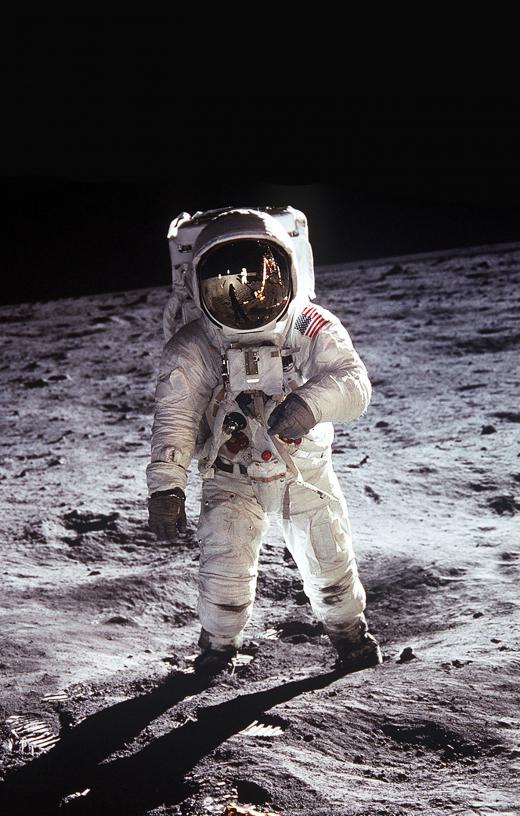What are Lunar Maria?
 Michael Anissimov
Michael Anissimov
The lunar maria (singular: mare) are the dark spots on the Moon. Maria means "seas" in Latin, and the lunar maria have their name due to their ocean-like appearance in contrast to the lighter spots on the Moon. Despite the name, they are are not water though, just a darker type of rock. The Moon is completely devoid of any liquid moisture whatsoever, although scientists do believe there may be water molecules present in some locations. The first mission to land a man on the Moon, Apollo 11, landed in a minor lunar mare, the Sea of Tranquility, and the lower stage of the lunar module is still there today.
The lunar maria were formed between 3.16 and 4.2 billion years ago, as measured by radiometric dating, though crater counting methods suggest that some portions may have formed as recently as 1.2 billion years ago. They are flood basalts formed from huge ancient volcanic eruptions on the Moon, similar to eruptions that caused mass extinctions on the Earth 251 million years ago. Lunar maria primarily exist on the Moon's near side. The far side, which cannot be viewed from the Earth, and has only been photographed by a few space probes, is almost free of maria.

The eruptions that caused the lunar maria got their heat source from tidal heating: warmth caused by the slight warping of the Moon as it makes its way around the gravity well of the Earth. Over millions of years, this heat can build up underground until it is sufficient to trigger a volcanic eruption. When these huge eruptions did take place, the resulting lava flows crept into the low-lying parts of the Moon, many of which are impact basins. The South Pole-Aitken basin on the Moon, the largest known impact crater in the solar system, is only modestly covered in mare basalts.

Most manned missions to the Moon have landed in lunar maria, due to their relative flatness compared to lunar highlands. Rock samples have been returned from both lunar highlands and maria, and they differ significantly in their content. The rocks in the maria have higher iron content, which is partially responsible for their darker color.
AS FEATURED ON:
AS FEATURED ON:













Discussion Comments
are the lunar highlands also caused by volcanic eruptions?
Thanks for the reply anon 50510!
what are light colored areas on the moon called?
i think it is highlands. am i correct?
Our moon's rotation ("day", like our 24 hour period is a rotation) and revolution ("year" like our 365 day period) are exactly the same at approximately 27.5 Earth days. Because it's "rolling" the same speed as it's "spinning", we always see the same side.
The article either refutes or doesn't take into account the recent claims of the presence of water on the moon in a recently concluded unmanned expedition -- what is the most recent update on this count? Furher, the moon's axial motion takes approximately 27.5 days ( as per my child's Geography text book). I fail to understand how one side could never have been seen at all. Do explain since I consider your articles authentic and comprehensive.
Post your comments